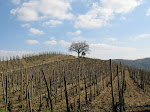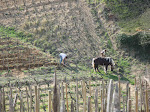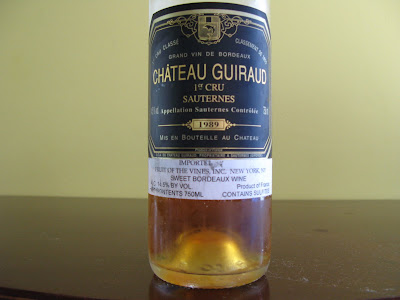
Puligny-Montrachet is considered by many to be the finest village in Burgundy for producing vin blanc, but there are surprising few domaines based within its limits. Listing the high quality domaines of Meursault can take up a full page, but Puligny only needs a small paragrah. It does not help that the great premiere and grand crus of Puligny have been carved up by various domaines from throughout the cote, leaving little for the locals to care for. With so few top producers, you would think that all the best estates of Puligny would be on the radar of every collector. Yet, outside of the Domaines Leflaive and Sauzet, few estates have attracted cult followings. Writers have long praised the wines of
Domaine Louis Carillon, but despite this, the producer has not become fashionable. Today, some of Burgundies best valued great wines emerge from this estate.
Arranging an appointment at domaines like Leflaive can require a blessing from the Pope, but our visit to Carillon last July took no more effort then faxing a request for a visit. Jacques Carillon runs the domaine today and was extremely pleasant. This estate may be one of the best producers in one of Burgundies most prestigous villages, but there is no sense pretension to found at Carillon. The wines did not need any help in illustrating their worth.
Puligny-Montrachet, 2006 - (barrel sample) Rich in mouth, but also racy and mineral. Rich feel in mouth.
Puligny-Montrachet, 1er Cru, Champs Canet, 2006 - (barrel sample) 40 year old vines.
Richer texture. The fruit is tropical and very long. Very good/outstanding.
Puligny-Montrachet, 1er Cru, Les Combottes, 2006 - (barrel sample) 15 year old vines. Mucher richer in the mouth. Great minerality. Very good.
Pulingy-Montrachet, 1er Cru. Les Perrieres, 2006 - (barrel sample) 31 year old vines. Great minerality. The body is very rich, but still elegant. Awesome wine.
Puligny-Montrachet, 1er Cru, Les Referets, 2006 - (barrel sample) 42 year old vines. Very rich and very Meursault-like. Excellent, long banana flavored fruit. Excellent length.
Bienvenues-Batard-Montrachet, Grand Cru, 2006 - (barrel sample) 43 year old vines. Very refined nose. Elegant and long on the palate. Great piercing minerality on the finish. Holy cow this is good!
Puligny-Montrachet, 2005 - Rich texture and nice length. Very good, but not as defined as the 2006.
Puligny-Montrachet, 1er Cru, Champs Canet, 2005 - Very rich and ripe. Nice texture. The fruit is peachy with tropical notes. Excellant wine.
Puligny-Montrachet, 1er Cru, Les Combottes, 2005 - More complex and mineral. Full bodied with excellent length.
Puligny-Montrachet, 1er Cru, Les Perrieres, 2005 - Great fruit on the nose. Rich in the mouth with ripe peach flavors. Really nice minerality. Awesome.
Pulingy-Montrachet, 1er Cru, Les Referets, 2005 - Rounder than the preceeding wines. Very good, but more one-dimensional.
All the wines tasted were very pure and great expressions of their terroir. It is refreshing to taste young white Burgundies that are not dominated by a wave a new oak. Each wine in Carillon's portfolio is outstanding and I would not hesitate to say that Carillon's Bienvenues is the reference point wine for this vineyard. For whatever reason, the wines from Domaine Carillon are not chased down by collectors and therefore remain good values. I recently picked up a 2002 Puligny-Montrachet at a retail shop for $35. The wine was still very young, but it was the definition of Puligny--elegant and mineral. Bottles with Domaine Leflaive on the label may be more sought after, but those from Louis Carillon et Fils should be no less cherished.

















